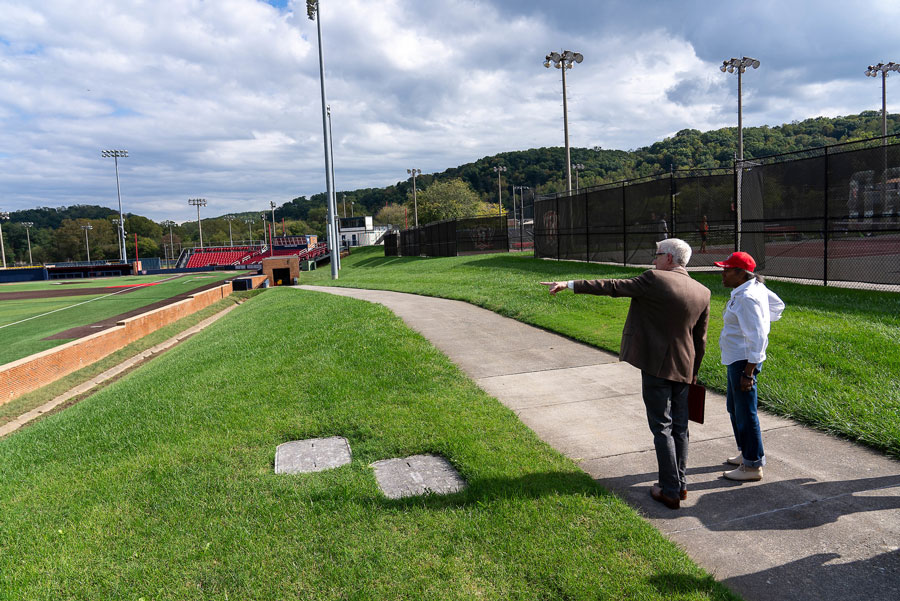Planning, practice and partnerships key to university’s response to Helene
by Peter McCann, David E. Perryman, Eric Plummer and Justin Ward
October 08, 2024
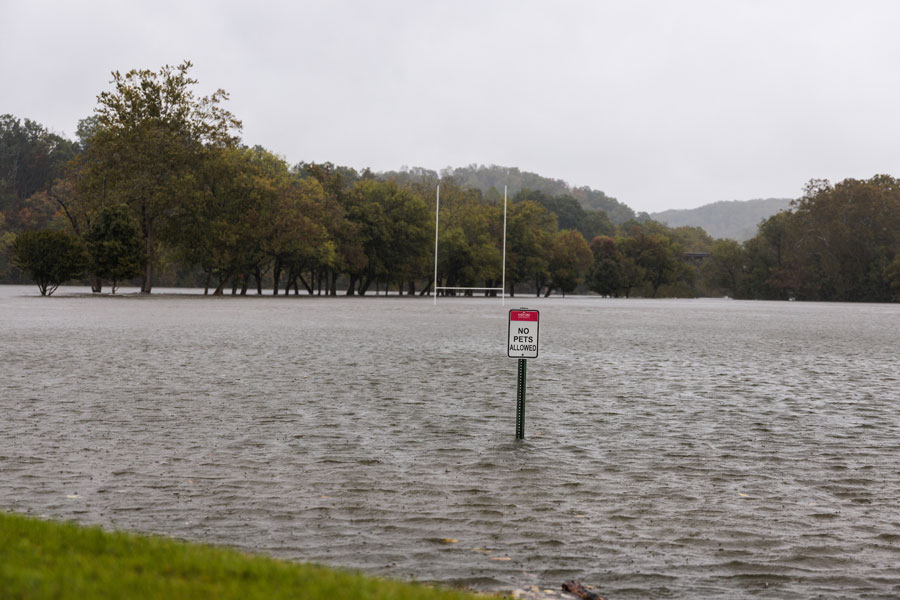
On the surface, Radford University’s recent response to the remnants of Hurricane
Helene was a well-orchestrated effort involving several university offices, numerous
employees and a handful of outside organizations and agencies.
However, the groundwork for this successful operation was established long before
the New River swelled over its banks in Radford and began climbing the hill toward
campus.
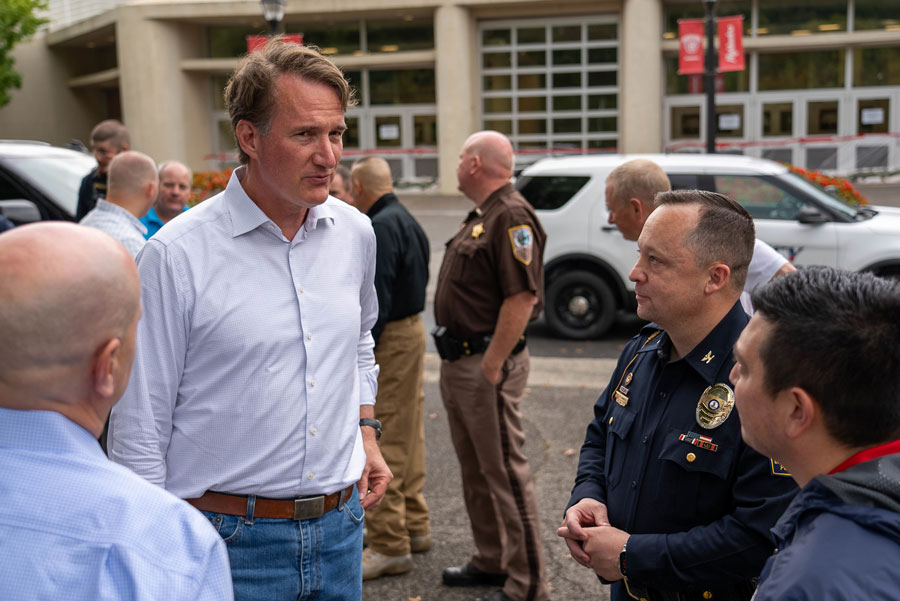
Preparation streamlines effort, saves precious time
The university practices emergency responses throughout the year to prepare for a
wide variety of crisis scenarios – from natural disasters to campus protests and cybersecurity
attacks. These efforts are led by Director of Emergency Management Peter McCann and
supported and resourced by senior leadership.
Some of these exercises involve local, regional and state public safety, law enforcement
and emergency management teams. Establishing strong partnerships with external organizations
through these “dress rehearsals” pays dividends when the time comes to quickly respond
to a real-life crisis.
“Having well-established plans and procedures ensured that university personnel and
external partners were fully integrated in our response efforts to Helene, allowing
us to quickly mobilize and take appropriate action as the floodwaters from the New
River began to rise,” said McCann. “This preparation streamlined our efforts, which
saved precious time and enabled us to get out in front of the escalating situation.”
Early monitoring, decisive decision-making, coordinated communication
In the days before Helene reached Radford, the Public Safety team monitored forecasts
and flood warnings from the National Weather Service regarding the storm’s potential
impacts on the New River. The Radford area has experienced flooding issues in the
past, so the team also drew upon firsthand experience and institutional memory to
assist in planning.
Timely communication with the National Weather Service and local partners enabled
the Radford University Police Department, Public Safety and Facilities Management
to make early decisions to close access to parking lots and the Dedmon Center to prevent
vehicle damage and lessen the impact on university facilities. Campus-wide communication
alerted students, faculty and staff about the incoming storm, parking lot closures
(Z and FF), road closures (Dedmon Center access) and the potential for flooding, including
preparation and safety recommendations.
Securing campus, pre-positioning resources and planning for evacuation
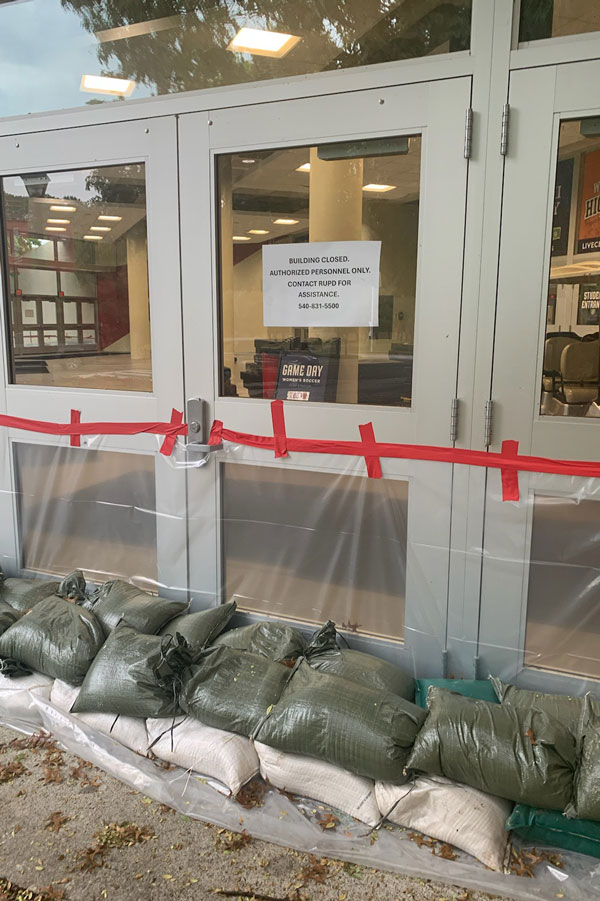
The Facilities Management team also took painstaking steps to ensure all buildings
on campus were secure and protected from potential flood damage, including sandbagging
entry points.
With Helene bearing down on Radford, the response team coordinated with other campus
stakeholders and regional partners, including the Town of Blacksburg and the Virginia
Department of Emergency Management, to pre-position essential equipment such as emergency
vehicles and additional sandbags.
“We also reviewed existing evacuation routes for those areas of campus that are most
vulnerable to flooding,” said Radford University Police Chief Eric Plummer. “This
ensured that we could get our people out of harm’s way in the event that floodwaters
breached those areas.”
Deploying resources during the storm while monitoring developing situation
As a final step before the storm hit, the university established its Mobile Command
Post vehicle near the Dedmon Center. With heavy rains and wind gusts up to 60 mph
beginning to pelt the area, the command post deployed first responders to manage traffic,
assist in securing campus facilities and respond to immediate emergencies if needed.
They also managed road access to the Dedmon Center and affected parking lots to prevent
entry into flooded or dangerous areas, redirecting traffic away from these affected
zones.
Even as first responders and facilities crews sprang into action, the command post
monitored water levels along the New River and areas of campus prone to flooding,
as well as data from National Weather Service river gauges measuring water levels
in North Carolina.
Assessing damage and taking steps toward recovery
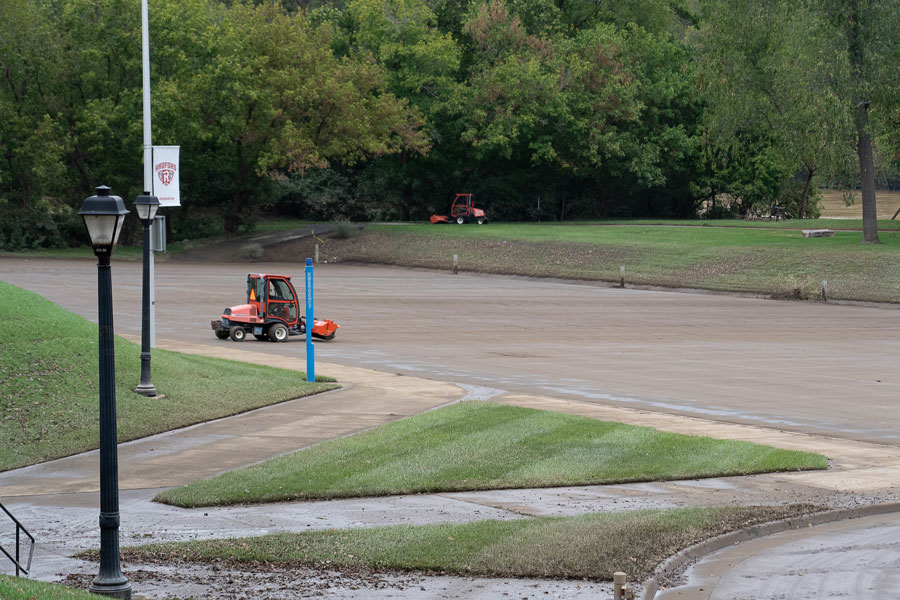
As the storm abated, the integrated emergency response team began to assess campus
infrastructure to identify flood damage and safety hazards, such as electrical outages
or structural damage to parking lots or buildings.
They provided updates to the campus community regarding the status of the floodwaters
and the reopening of facilities and parking lots while communicating any continued
dangers, such as standing water or debris.
Coordination with local authorities in the aftermath of the storm was also critical.
The team worked alongside its local, regional and state partners to aid in recovery
efforts and ensure timely assistance for any ongoing flood impacts.
Hosting elected officials in the wake of Helene
In the days following the storm, Virginia Gov. Glenn Youngkin, Lt. Gov. Winsome Earle-Sears,
Sen. Travis Hackworth, Del. Jason Ballard and Rep. Morgan Griffith visited Radford
to assess the damage. They toured the city and university to inspect recovery efforts
and let local leaders know they’re here for support.
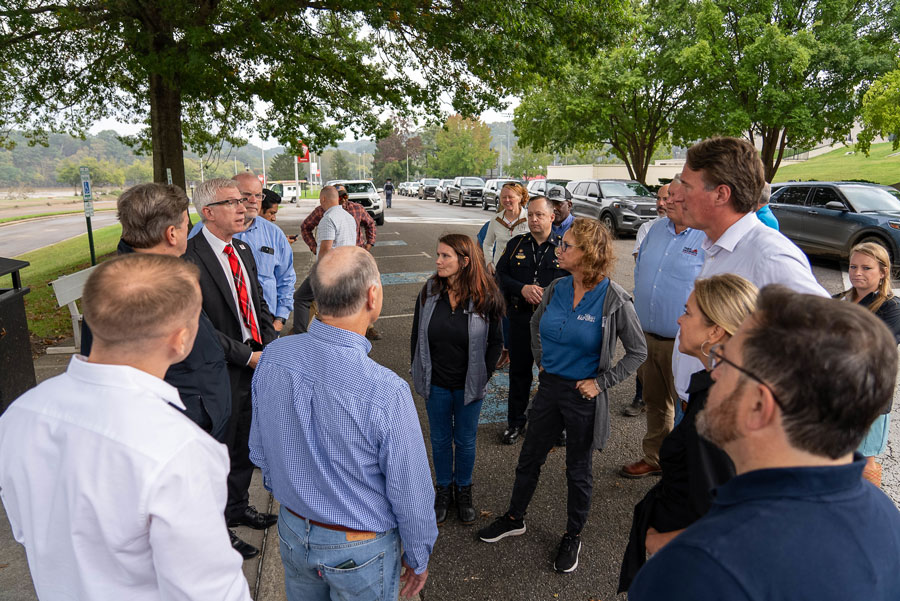
“I talked to Bret on Friday and said, ‘Bret, you’re going to get wet,’ and he said,
‘We’re close, but we’re prepared,’ so thank you for all your preparation. They had
already moved everybody out of the way,” Youngkin said. “When you’re sitting next
to this beautiful river, this river has Mother Nature behind her. We have to make
sure we’re prepared for things like this.”
Earle-Sears echoed the governor’s sentiment, emphasizing the importance of their visit.
“That’s why we do these visits. If we show up, then people will understand they’re
important to us. You're important,” she said.
President Bret Danilowicz commented on the university’s efforts and the larger impact
of the storm. “I am proud of the many employees who helped us prepare for, respond
to and clean up after Helene, and I am grateful that we weathered the storm,” he said.
“But we know there are families, neighborhoods and cities throughout the southeast
that have been devastated, and our thoughts are with those individuals and communities
as they struggle to rebuild their lives. I am heartened by the number of Highlanders
who have expressed a desire to help our neighbors in need, and we will continue to
provide information about the best ways for them to do that.
“I also appreciate the support of Gov. Youngkin, Lt. Gov. Earle-Sears and our state
and federal elected officials. Their visits to Radford and the resources they have
committed to the region delivered a powerful message to the residents of Southwest
Virginia as they begin to rebuild after Helene.”
